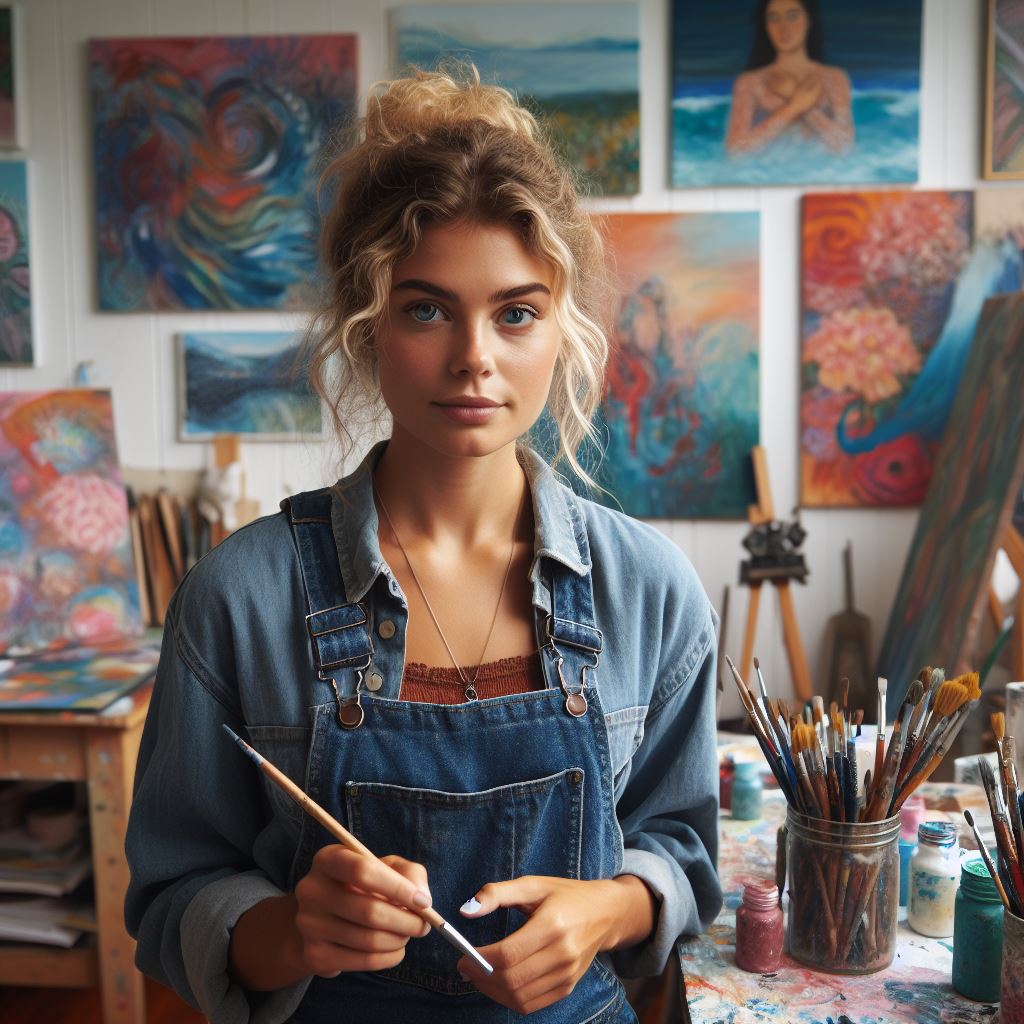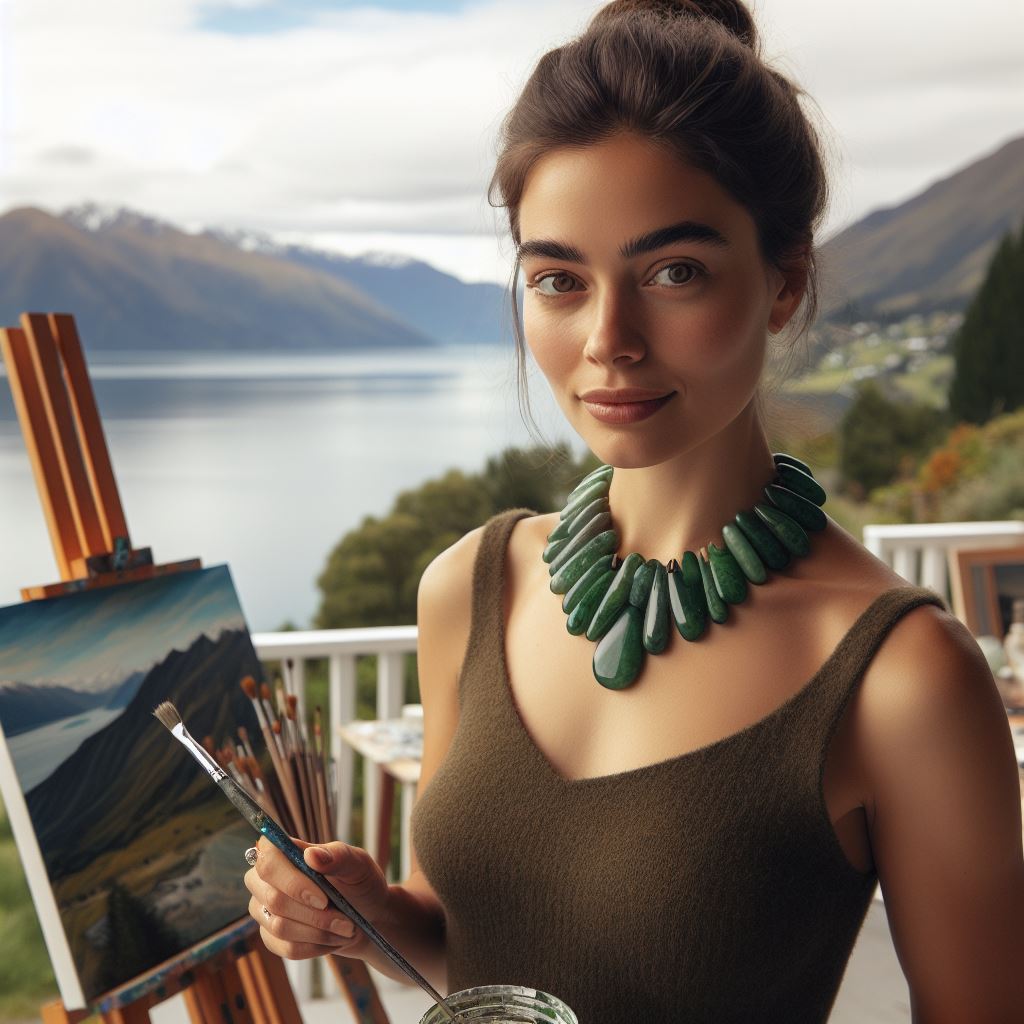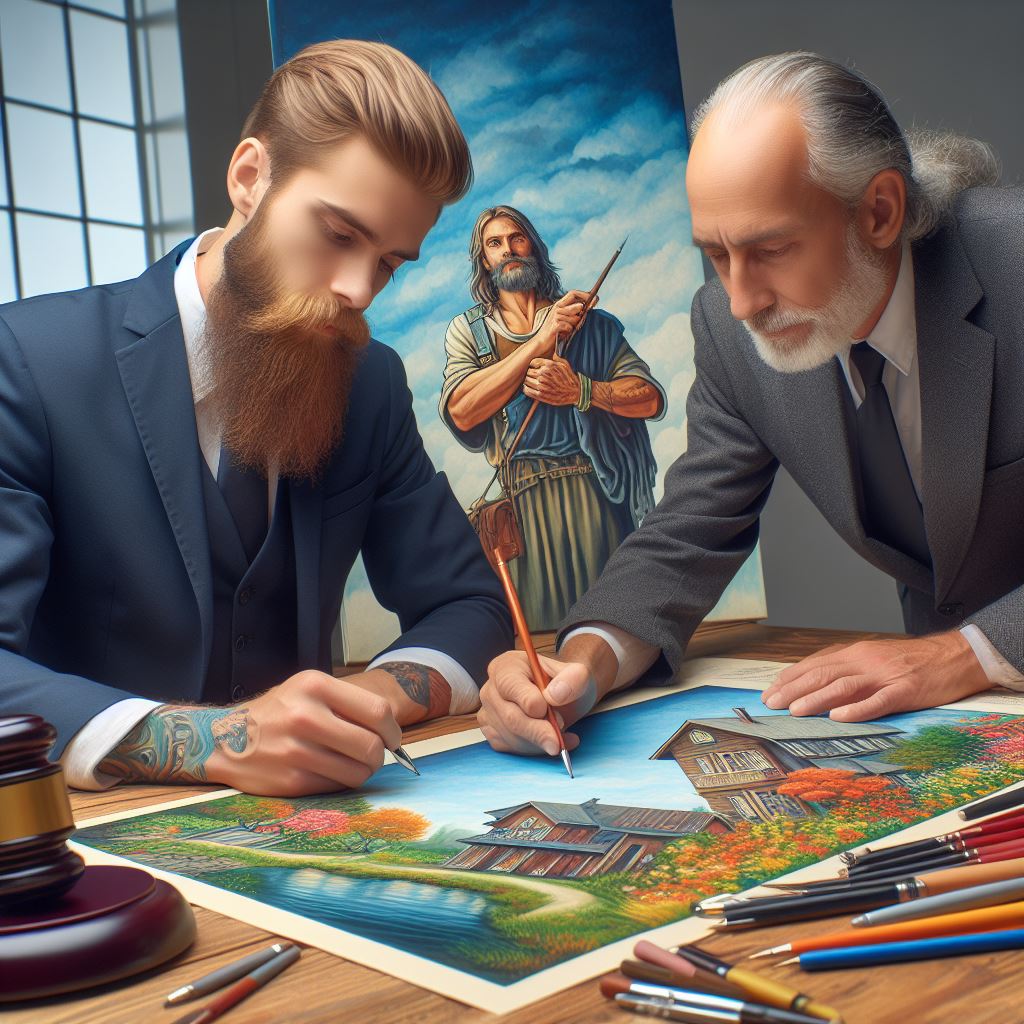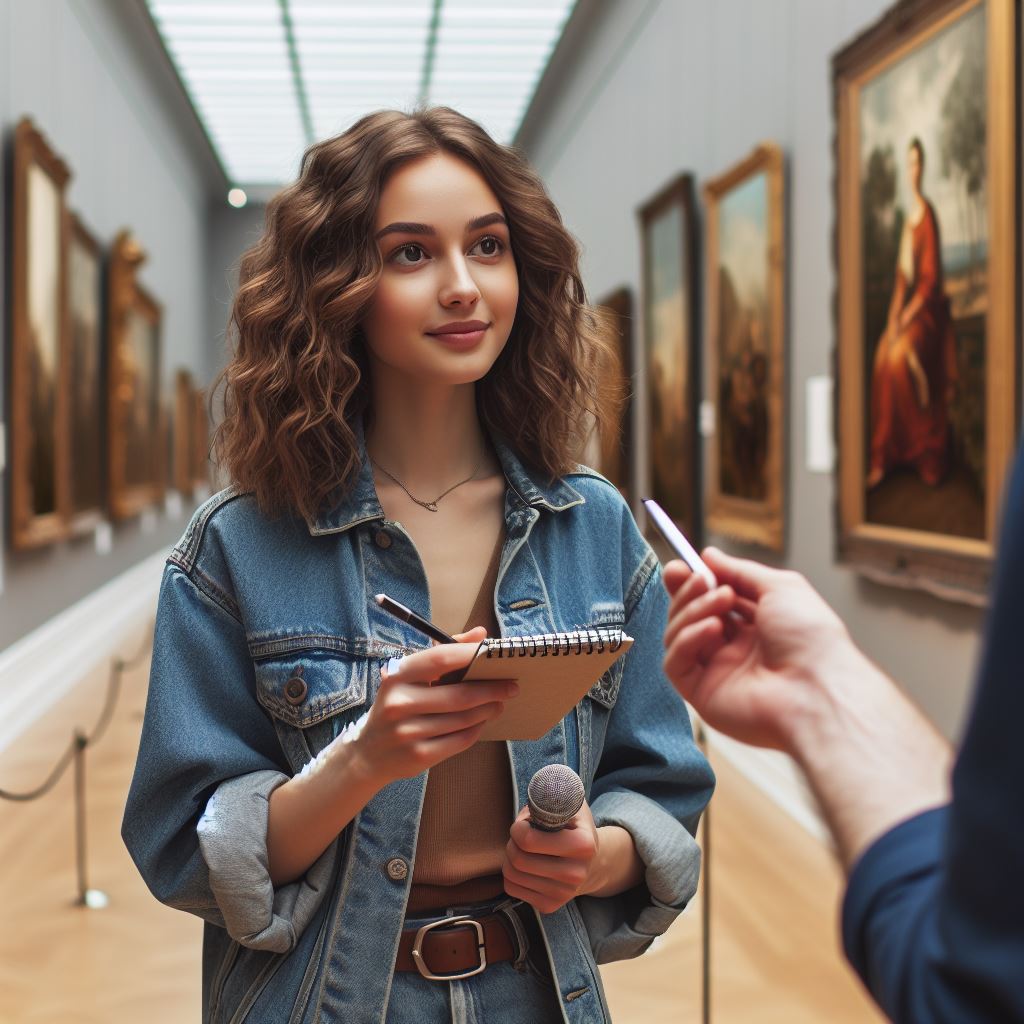Introduction
The art scene in New Zealand is vibrant and dynamic, offering exciting opportunities for aspiring artists. lets discuss on NZ Art Scene.
In this blog section, we will explore the importance of the art scene in New Zealand and provide an overview of the topic at hand.
Importance of the art scene in New Zealand
The art scene in New Zealand plays a pivotal role in promoting cultural expression and fostering creativity.
It serves as a platform for artists to showcase their talent, connect with audiences, and contribute to the cultural fabric of the country.
Moreover, the art scene also stimulates tourism and economic growth, attracting visitors from all around the world.
Overview of the topic
In this blog section, we will delve into the tips on breaking into New Zealand’s art scene.
We will discuss the key steps and strategies aspiring artists can take to establish themselves, gain recognition, and navigate the competitive art industry.
From networking and building a portfolio to participating in exhibitions and collaborating with local art communities, we will provide valuable insights and practical advice to help artists thrive in the vibrant art scene of New Zealand.
Remember, breaking into any art scene requires dedication, perseverance, and a unique artistic voice.
In the following sections, we will explore the specific tips that can help aspiring artists succeed in New Zealand’s art scene. So, let’s dive in!
Researching the Art Scene in NZ
- Start by visiting local libraries and bookshops to find literature on NZ art history.
- Attend art exhibitions and networking events to connect with artists and industry professionals.
- Engage with the local community to gain insights into trends, preferences, and upcoming art events.
- Take advantage of online platforms like social media groups and forums dedicated to NZ art.
- Subscribe to newsletters and mailing lists of art organizations and galleries for updates on exhibitions and opportunities.
- Utilize search engines to find reputable art websites and blogs that focus on the NZ art scene.
- Join online communities and discussion forums to interact with artists and art enthusiasts in NZ.
- Follow art influencers and curators on social media for inspiration and information on the latest trends.
- Consider joining art classes or workshops to learn more about different artistic techniques and styles.
Familiarizing Yourself with the Art Scene
- Visit local art museums, galleries, and art centers to immerse yourself in NZ’s artistic heritage.
- Attend art fairs and festivals to witness the diversity of artworks and meet artists in person.
- Stay up to date with art magazines and publications that feature NZ artists and their works.
- Engage in conversations with local artists, gallery owners, and curators to gain insights into the art scene.
- Explore different art movements and styles that have emerged in NZ over the years.
- Research prominent art institutions and universities that offer art programs or courses in NZ.
- Consider volunteering or interning at an art organization or gallery to gain hands-on experience.
Exploring Local Artists and Galleries
- Visit galleries representing emerging and established artists to understand the type of art being showcased.
- Attend open studio events to meet artists, see their creative process, and potentially purchase their artworks.
- Research local art competitions and awards to discover talented and up-and-coming artists.
- Connect with local artists on social media platforms to stay updated with their latest works and exhibitions.
- Follow art blogs and websites that highlight local artists, their inspirations, and artistic journeys.
- Attend artist talks and panel discussions to gain insights into their creative process, inspirations, and techniques.
- Consider joining art critique groups or art clubs to receive feedback on your own artwork and expand your network.
Online Resources and Platforms for Art in NZ
- Utilize online platforms like Artsy, Saatchi Art, and Trade Me to discover and purchase art from NZ artists.
- Visit the websites and social media pages of local galleries and art organizations to explore their virtual exhibitions.
- Join online art communities and groups specific to NZ artists, where you can showcase your own work and receive feedback.
- Attend virtual or live-streamed art events and exhibitions organized by local galleries and art institutions.
- Explore online portfolios and websites of individual artists to view and potentially purchase their artwork.
- Consider selling your own artwork on online marketplaces like Etsy or through your own website or social media page.
- Engage with art-related hashtags on social media platforms to discover and connect with NZ artists.
By dedicating time to research, familiarize yourself with the scene, and explore local artists and galleries, you can establish a strong foundation within NZ’s dynamic art scene.
Utilize both offline and online resources to create connections, gain insights, and showcase your own artistic journey.
Remember, the art scene is ever-evolving, so continuous engagement and exploration are key to staying current and thriving in this vibrant community.
Building a Network
Attending art events and exhibitions allows artists to showcase their work and connect with potential buyers or collaborators.
Joining local art groups and organizations provides opportunities to meet other artists and learn from their experiences.
Connecting with fellow artists through social media platforms can lead to collaborations and the sharing of valuable resources.
Collaboration opportunities arise when artists actively seek out partnerships with others in the art community.
Attending art events and exhibitions
Attending art events and exhibitions is a crucial step in building a network in the art scene.
Being present at these events allows artists to showcase their work and attract potential buyers or collaborators.
Artists should make an effort to attend as many events and exhibitions as possible to maximize their visibility.
By actively participating in these events, artists can meet other individuals who share their passion for art.
Joining local art groups and organizations
Local art groups and organizations also play a significant role in building a network.
Joining these groups provides artists with a supportive community of like-minded individuals.
Personalized Career Consulting
Unlock your potential with expert career advice tailored to your goals. Get personalized guidance and actionable steps toward your dream career in New Zealand.
Get StartedArtists can share their work, gain feedback, and receive valuable advice from more experienced artists in these groups.
Additionally, joining local organizations allows artists to stay updated on upcoming opportunities and events.
Connecting with fellow artists
Connecting with fellow artists through social media is another effective way to build a network.
Platforms like Instagram and Facebook provide artists with a global reach and the ability to connect with artists from all over the world.
By engaging with other artists’ work, sharing their own, and participating in online art communities, artists can form connections and collaborations.
Collaboration opportunities
Collaboration opportunities present themselves when artists actively seek out partnerships.
Working alongside other artists brings fresh perspectives, new ideas, and expands artistic horizons.
Collaborations can lead to joint exhibitions, co-created projects, and the sharing of resources.
By embracing collaboration, artists can enhance their skills, gain exposure, and reach a broader audience.
Building a network in New Zealand’s art scene requires active participation and a willingness to connect with others.
Attending art events, joining local art groups, connecting with fellow artists, and seeking collaboration opportunities are essential steps.
These strategies not only expand an artist’s visibility but also provide support, inspiration, and valuable connections within the art community.
Developing Your Portfolio
- Showcasing your unique style and talent is crucial in the competitive NZ art scene.
- Each piece in your portfolio should represent your best work and highlight your artistic strengths.
- Quality presentation is essential to make a lasting impression on potential galleries, curators, and buyers.
- Consider the preferences and trends in the NZ art scene and tailor your portfolio accordingly.
Showcasing your unique style and talent
- Choose pieces that best represent your individual artistic style and showcase your talent.
- Highlight your strengths and what makes you stand out as an artist in the NZ art scene.
- Experiment with different mediums, techniques, and subjects to demonstrate your versatility.
Choosing the best pieces for your portfolio
- Select artworks that display your skills and artistic growth over time.
- Include a variety of pieces to showcase your range and ability to work across different themes.
- Consider what the NZ art scene is currently interested in, but also include personal favorites that reflect your passion.
The importance of quality presentation
- Invest in high-quality photographs of your artwork to ensure accurate representation.
- Use professional framing or display methods to enhance the overall presentation.
- Pay attention to details such as cleanliness, proper lighting, and attractive arrangement of your portfolio.
Tailoring your portfolio for the NZ art scene
- Research the preferences and trends in the NZ art scene to align your portfolio with current interests.
- Show an understanding of local culture and themes that resonate with New Zealanders.
- Attend local art events, exhibitions, and galleries to gain insights into what appeals to the NZ audience.
Basically, developing your portfolio is a crucial step in breaking into NZ’s art scene.
Showcasing your unique style and talent, choosing the best pieces, ensuring quality presentation, and tailoring your portfolio to the NZ art scene are essential.
By following these tips, you can increase your chances of success and make a lasting impression on the audience, galleries, and curators in New Zealand.
Approaching Art Galleries
When delving into New Zealand’s art scene, approaching art galleries is a crucial step towards gaining recognition.
Transform Your Career with a Professional CV and Cover Letter
Stand out to employers with an ATS-optimized resume and tailored cover letter designed to match your dream role. Let us craft your job application materials for success!
Get StartedResearching galleries that align with your style
- Identify and research art galleries that exhibit artwork similar to your own style.
- Visit their websites and social media pages to get a feel for the gallery’s aesthetics.
- Understand their preferences, target audience, and the types of artwork they usually exhibit.
- Look for galleries that align with your artistic vision and goals.
Preparing a professional artist statement
- Craft a concise artist statement that explains your artistic vision and creative process.
- Ensure your statement is clear, engaging, and reflects your unique artistic identity.
- Highlight your inspirations, influences, and any significant achievements or exhibitions.
- Tailor your artist statement to suit the specific gallery you are approaching.
Submitting your portfolio and application
- Organize your portfolio by selecting your best and most representative artworks.
- Include a variety of pieces that showcase your skills, technique, and versatility.
- Photograph your artwork professionally to ensure high-quality images for submission.
- Prepare a well-written application letter introducing yourself, your background, and artistic accomplishments.
- Follow the gallery’s submission guidelines and adhere to any specific requirements.
Following up and networking with gallery owners
- After submitting your portfolio, it’s essential to follow up with the gallery after a reasonable amount of time.
- Respectfully inquire if they have reviewed your work or if they require any additional information.
- Attend art events and exhibitions to meet gallery owners and establish connections within the art community.
- Engage in conversations, exchange business cards, and leave a lasting impression.
- Build and maintain relationships with gallery owners for potential future collaborations and opportunities.
Breaking into New Zealand’s art scene can be a challenging endeavor, but with the right approach and persistence, success is within reach.
By researching compatible galleries, preparing a professional artist statement, submitting a top-notch portfolio, following up, and networking, you can increase your chances of getting noticed and establishing yourself as a respected artist in the flourishing New Zealand art scene. Good luck!
Read: Grants for NZ Musicians: A Guide

Promoting Your Art
- Leverage social media platforms to showcase your artwork and reach a wider audience.
- Create engaging and visually appealing posts that highlight your artistic talent.
- Use relevant hashtags and participate in art-related discussions to increase your visibility.
- Collaborate with influencers or artists with a larger following to gain exposure.
- Share behind-the-scenes content to build a personal connection with your audience.
- Offer exclusive discounts or limited edition prints to incentivize purchases.
Creating a Website or Online Portfolio
- Build a professional website or online portfolio to showcase your artwork in a centralized and easily accessible manner.
- Display high-quality images of your artwork with detailed descriptions and pricing information.
- Ensure that your website or portfolio is visually appealing and easy to navigate.
- Include an about section to introduce yourself and tell your artistic journey.
- Provide contact information for potential clients or galleries interested in your work.
- Regularly update your website or portfolio with new artwork or exhibitions to keep it fresh and relevant.
Engaging with Art Communities Online
- Join online art communities or forums to connect with fellow artists and art enthusiasts.
- Participate in discussions, share your work, and provide constructive feedback to others.
- Attend virtual art events or webinars to learn from industry experts and expand your knowledge.
- Collaborate with other artists on joint projects or virtual exhibitions to gain exposure.
- Stay active and consistent in your interactions to build a strong online presence within the art community.
Collaborating with Local Businesses or Cafes
- Approach local businesses or cafes to display your artwork on their premises.
- Offer to create custom pieces that align with the aesthetic of the venue.
- Propose a mutually beneficial partnership where the business can benefit from showcasing your art.
- Host an art event or exhibition at the venue to attract more customers and promote your work.
- Provide business cards or promotional materials with your contact information for interested buyers.
Ultimately, breaking into New Zealand’s art scene requires proactive promotion and networking.
Use social media platforms, create a professional website or portfolio, engage with art communities online, and collaborate with local businesses or cafes to gain exposure and establish a presence within the art scene. Let your creativity shine and seize every opportunity to showcase your talent.
Read: Women in NZ Music: Rising Stars
Participating in Art Competitions and Exhibitions
Art competitions and exhibitions are great opportunities for artists to showcase their work and gain recognition.
In order to make the most of these opportunities, it is important to do thorough research, prepare your artwork properly, understand submission guidelines, and be aware of the benefits of participating.
Researching upcoming art competitions and exhibitions in NZ
- Utilize online platforms: Explore websites, social media pages, and online forums to stay updated about upcoming competitions and exhibitions in New Zealand.
- Local art organizations: Connect with local art organizations or societies that often organize and promote art events.
These organizations usually have information about scheduled competitions and exhibitions. - Art magazines and newsletters: Subscribe to art magazines or newsletters that feature event listings. These resources provide valuable information about upcoming opportunities in the art scene.
Preparing your artwork for submission
- Create a portfolio: Curate a portfolio of your best artwork that represents your style, technique, and artistic vision. This will help you showcase your talent effectively.
- Choose your best pieces: Select artworks that highlight your skills and creativity. Ensure that the artworks are in good condition and ready to be exhibited or judged.
- Presentation matters: Pay attention to the presentation of your artwork. Use high-quality frames or display materials that enhance the overall appeal of your pieces.
Understanding the submission guidelines
- Read carefully: Take the time to thoroughly read the submission guidelines provided by the competition or exhibition.
Understand the specifications for artwork size, medium, and any other specific requirements. - Follow instructions: Follow the guidelines precisely to ensure that your submission is eligible for consideration. Failure to comply with guidelines can result in disqualification.
- Submission deadline: Be aware of the submission deadline and make sure to submit your artwork within the specified timeframe. Late submissions are generally not accepted.
Benefits of participating in competitions and exhibitions
- Exposure: Competitions and exhibitions provide a platform for your work to be seen by art enthusiasts, collectors, and potential buyers. This exposure can lead to greater recognition and opportunities.
- Networking: Art events bring together artists, curators, and art professionals. Networking with these individuals can expand your artistic circle and lead to collaborations or future exhibition opportunities.
- Validation and feedback: Participating in competitions and exhibitions allows you to receive feedback and validation from judges, critics, and fellow artists. This can help you grow and improve as an artist.
- Awards and prizes: Competitions often offer awards and prizes, which can bring financial benefits and further recognition to your artistic career.
- Building your portfolio: By participating in competitions and exhibitions, you can continuously add accomplishments to your portfolio, making it stronger and more appealing to potential buyers or gallery owners.
Therefore, participating in art competitions and exhibitions can be a rewarding experience for artists.
Through research, preparation, adherence to guidelines, and understanding the benefits, artists can make the most of these opportunities and advance their careers in New Zealand’s vibrant art scene.
Read: NZ Music Festivals: Behind Scenes
Building Your Reputation and Brand
- Establish your unique artistic style and values that make your work stand out.
- Create a consistent body of work that showcases your talent and artistic vision.
- Engage with the art community by attending exhibitions, workshops, and networking events.
- Collaborate with other artists and participate in group shows to expand your reach.
- Showcase your art online through a professional website and social media platforms.
- Grow your online presence by sharing your creative process and interacting with followers.
Consistency in Your Artistic Style and Values
- Define your artistic style by experimenting with different techniques, mediums, and subjects.
- Refine your style by studying the works of other artists and seeking inspiration from various sources.
- Stay true to your artistic values and beliefs, expressing them through your artwork.
- Avoid constantly changing your style, as consistency helps you build recognition among art enthusiasts.
- Continuously challenge yourself to evolve and improve your art while maintaining your unique voice.
Engaging with the Art Community
- Become a member of local art organizations and attend their meetings and events.
- Network with fellow artists, gallery owners, and collectors to build valuable connections.
- Participate in art competitions, exhibitions, and art fairs to showcase your work to a wider audience.
- Volunteer at art events or offer to assist established artists to gain exposure and experience.
- Attend gallery openings and art talks to stay informed about the latest trends and developments in the industry.
Seeking Feedback and Constructive Criticism
- Share your artwork with trusted friends, mentors, and fellow artists to receive honest feedback.
- Be open-minded and receptive to constructive criticism, using it as an opportunity for growth.
- Ask for specific feedback regarding techniques, composition, or the emotional impact of your work.
- Consider joining critique groups or participating in portfolio reviews for valuable insights from professionals.
- Use feedback to improve your skills, refine your artistic style, and address any weaknesses in your work.
Developing a Personal Brand as an Artist
- Create a compelling artist statement that reflects your artistic vision, inspirations, and intentions.
- Develop a unique visual identity, including a logo, color palette, and consistent branding across all platforms.
- Build an online portfolio and keep it regularly updated with your latest artworks and accomplishments.
- Share your artistic journey and behind-the-scenes insights to connect with your audience on a personal level.
- Consider collaborating with other artists, brands, or organizations to expand your visibility and reach.
- Engage with your audience by responding to comments, participating in interviews, and sharing your artistic process.
Developing a successful career in the art scene requires more than just talent.
Building your reputation and brand is essential for establishing a strong presence and attracting art enthusiasts, buyers, and opportunities.
Consistency in your artistic style and values will differentiate you from others, while engaging with the art community will expand your network.
Seeking feedback and constructive criticism enables growth, and developing a personal brand as an artist helps create a recognizable identity.
By following these tips, you can navigate the competitive art scene and increase your chances of success.
Read: Maori Music: NZ’s Rich Heritage
Conclusion
In closing, breaking into New Zealand’s art scene requires determination, persistence, and strategic networking efforts.
Artists should leverage opportunities within local communities, galleries, and art events to showcase their work and connect with fellow artists and potential buyers.
Building a strong online presence through social media platforms and personal websites can also expand artists’ reach and visibility in the digital landscape.
Additionally, seeking mentorship and guidance from established artists can provide invaluable insights and support along the journey.
Embracing a mindset of continuous learning and experimentation allows artists to evolve creatively and adapt to changing trends and preferences in the art world.
It’s essential for artists to remain authentic to their unique artistic voice while also staying open to feedback and constructive criticism.
Collaboration with other artists and participation in collaborative projects can foster creativity and expand artistic horizons.
Ultimately, success in the New Zealand art scene is a combination of talent, hard work, and strategic networking.
By staying committed to their craft and actively engaging with the art community, aspiring artists can carve out their niche and make meaningful contributions to the vibrant cultural landscape of New Zealand’s art scene.
As artists continue to pursue their passions and share their creativity with the world, they contribute to the rich tapestry of artistic expression that defines New Zealand’s unique identity on the global stage.




